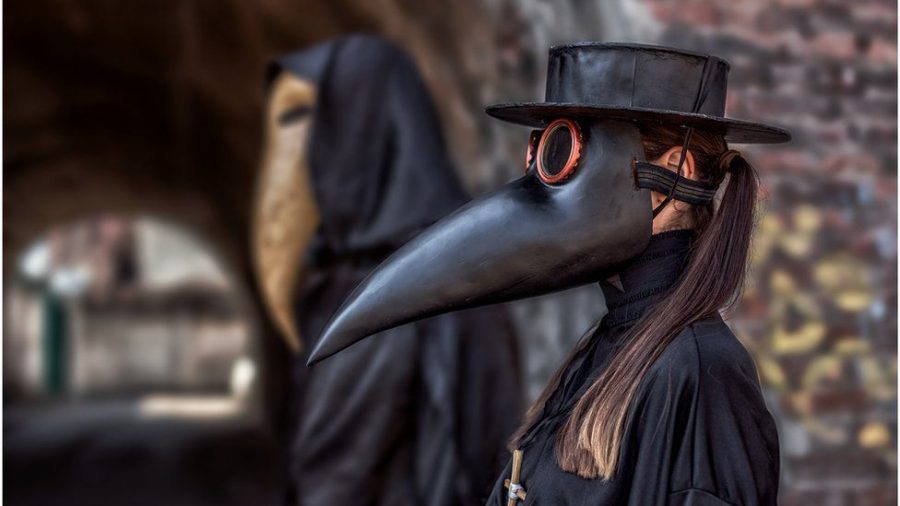Plague versus pandemic: what is the same, and what is different?
April 8, 2021
Disease has rampaged humanity throughout our entire history of existence, from sweeping infant mortality rates in ancient times, to the diseases brought to the Native nations by Western Europeans in the late 15th century and onwards. However, as one of the most sensationalized plagues in European history, the Bubonic Plague gives us insight into the medical practices of the time, and reveals eerie parallels reminiscent of the modern day COVID-19 pandemic.
If asked to imagine the life of a typical Londoner during the years 1664 and 1665, the immediate thought may be something rather primitive, perhaps little knowledge of medicine and likely as Christian God-fearing as you could possibly imagine. This is a somewhat accurate picture according to the Journal of the Plague Year by Daniel Defoe, which is a fictional novel written sixty years after the plague’s reign, though it was based on a collection of first hand accounts.
Though the methods of communication in this era were certainly not as time efficient as social media or the internet, many practices to protect themselves against the plague are similar to ours now. People relied on their neighbors for the latest news and data. Normally, people had three sources of information: the government, the Church of England, and their neighbor. Similar to now, the government bailed on the people and failed to communicate the facts quickly and efficiently in an effort to downplay the situation. As a potential super spreader event, masses were cancelled and thus people were left with only their neighbors left.
Many people practiced some sort of social distancing, though theirs was only three feet compared to our six feet apart rule. Doctors often took this recommendation to the next level, as many carried around rods to wave around themselves to ensure passerbys would keep their distance. Notably, there was a mandatory quarantine should someone in your household or yourself become infected. You were ordered to report the infection to the government within two hours, and a guard would be posted outside your door round the clock. Even if you were not the contagious one, you were locked in your house for about twenty days, left to watch your loved ones die with little aid from outsiders.
As modern readers can certainly empathize, some of the people who had to quarantine became so desperate to leave, they escaped their own homes through various means, like bribing or distracting the guard, and in some instances even assaulting guards. Regardless of if they knew they were infected or not, their actions spread the disease even further, similar to modern exhausted spring-breakers.
The responses from the public also mirror today. Some people thought it was God’s will, some thought it was a hoax, others tried to follow the rules, and in the process lost their sanity. For a year, people seldom felt much other than grief and pain. In both time periods, people were dying across the world from left to right. In London alone, an estimated one fourth of the city was wiped out in a single year during the Bubonic Plague. In the United States, about 30.7 million people have tested positive for COVID-19.
For us in the modern era, though, there is hope. We have the science and technology to create vaccines, and with each state beginning to open up eligibility for more people, we can soon anticipate a return to normalcy.







